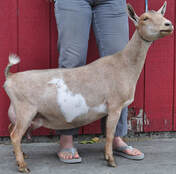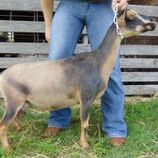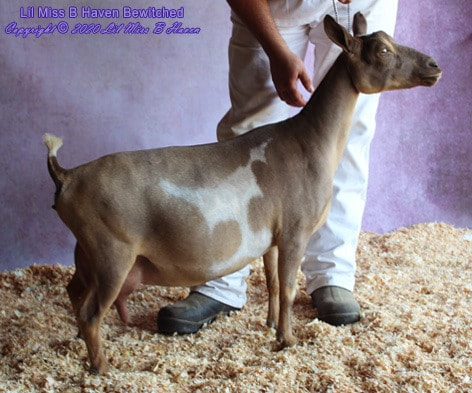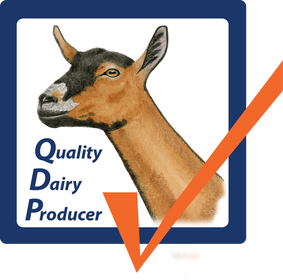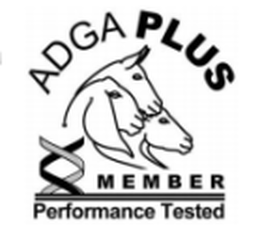|
|
|
All domestic animals have been subject to inbreeding during their periods of breed formation. Breed formation for Nigerian Dwarf goats began when small goats were imported from Africa between the 1930s and 1950s. These were primarily zoo animals per the Livestock Conservancy. Nigerian Dwarf goats were first recognized as a breed by the American Goat Society in 1981. The American Dairy Goat Association did not recognize the breed, by creating a purebred herdbook, until 2005. Thus, It is a breed that has gone through the development process fairly recently (1950s-1980s). Nigerians did not graduate from the Livestock Conservancy's priority list until 2013. Since then, the breed has exploded in popularity, especially among hobby farmers. Along the way there has been a resurgence in inbreeding with the goal of concentrating the genetics of popular sires and dams. Breed DevelopmentThere are genetic consequences when forming breeds (inbreeding for specific traits). The most obvious one is the loss of genetic diversity. With inbreeding comes the unintended consequence of an increase in disease-producing alleles (variant form of a gene). During breed formation, the priority and focus is selection for breed traits such as stature and milk production. Disease-producing alleles start becoming visible as the breed becomes more homozygous (uniform), those alleles spread throughout the breed, and may be accidentally paired to produce the genetic defect. In Nigerians, it is suspected by some (including me) that this has resulted in Carpal Hyperextension (CH) in the breed (More on CH later). The next key step in breed development is the active monitoring and selection against genetic disease. Research on dog breeds is far more advanced than in goats. The Australian Shepherd Health & Genetics Institute provides their community with information on genetic databases, disease prevalence, and disease testing. Reputable dog breeders screen their dogs using DNA testing. As the population of a breed expands to ten generations, inbreeding coefficients and the risk of accidentally pairing deleterious recessive alleles declines. In addition, active monitoring and selection for quality and health helps to purge developing breeds of genetic disease. HOWEVER, Popular sire syndrome moves a breed in the other direction as that sire's lines appear in increasing numbers of pedigrees and push inbreeding coefficients beyond healthy levels. Consequences of inbreeding to concentrate that sire's (or dam's) influence are the increase in genetic/inbreeding load (recessive disease-producing alleles) and inbreeding depression (for example., milk depression). InbreedingTwo common breeding practices are inbreeding and outcrossing. Inbreeding is practiced in order to improve predictability of certain traits. For example, to try to ensure that all offspring have strong medial suspensory ligaments.
Outcrossing
Carpal Hyperextension in NigeriansCarpal Hyperextension typically occurs in affected Nigerians between the ages of 1-3 years. Bucks are most often the animals affected, although does can be as well. It is evidenced by a protrusion of the accessory carpal bones behind the knee and develops to the point where the leg, from knee to pastern assumes a concave curve (bending inward). Here are a few blogs on the topic: Our Limping Goat (2021) The Limping Goat (2014) There is also a group on Facebook dedicated to Carpal Hyperextension in Nigerians. Both blogs examine the theories that mineral supplements can reverse the effects. In "The Limping Goat," the author argues that mineral supplement can prevent/alleviate the problem. In Our Limping Goat, mineral supplementation ultimately fails to remediate the problem. Moreover, discussions among some experienced breeders in a CH discussion group have begun to suggest that the root cause is genetic. We don't know if it is a genetic problem with mineral uptake or a genetic problem in the musculoskeletal structure. That will require research, not anecdotal evidence. Inbreeding and Carpal Hyperextension One of the tools that I use as a breeder is the Kintraks database. Over the course of several years, I have added pedigree information as far back as "committee registered" Nigerians, or the first Nigerians in the records. This enables me to track COIs and to examine pedigree trees for common ancestors and common ancestor trees. What I am finding is that ancestor trees for "popular sires" appear on both the sire and dam's side of the pedigree. It is possible that this is correlation and not causation, but given the popular sire syndrome that has been documented in existing research on inbreeding in dogs, I am fairly confident that inbreeding is the cause of the prevalence of CH in Nigerians. OMG! Which Breeders Should I Avoid????? I'm sorry to be the bearer of bad tidings (don't shoot the messenger), but CH is a genetic thread that is prevalent throughout the breed, it is part of the breed's "inbreeding load." Consequently, CH can crop up in ANY breeder's program. The only way to eradicate CH is through purging and outcrossing. That means diligently monitoring for the defect and culling animals when they exhibit the problem. In the last few years I've had to do that with two bucks that I've purchased at great expense. One buck deteriorated so rapidly that he struggled to use his front legs. He was suffering and had to be euthanized. The other has been examined both by an expert from the dairy goat association and my veterinarian. He will be wethered and used for weed abatement here until his condition deteriorates. The buck (literally and figuratively) stops here. For more information about inbreeding coefficients:
www.instituteofcaninebiology.org/blog/coi-faqs-understanding-the-coefficient-of-inbreeding Comments are closed.
|
|
|
